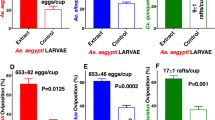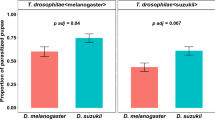Abstract
THE taxonomy of the Acarina Trombiculidae requires stabilizing by the study of the non-parasitic post-larval stages. Fewer than sixty nymphs and adults are known out of more than five hundred species, and of these only very few can be identified with absolute certainty. Techniques for rearing nymphs from engorged larvæ are widely known and practised, but a single host often carries several or many species of chiggers, and taxonomic studies make it necessary to identify each nymph by reference to the cast larval pelt. Although this is practicable in the laboratory, it is extremely difficult to do in the field especially when moving from place to place, because nymphs may take several weeks to emerge.
This is a preview of subscription content, access via your institution
Access options
Subscribe to this journal
Receive 51 print issues and online access
$199.00 per year
only $3.90 per issue
Buy this article
- Purchase on Springer Link
- Instant access to full article PDF
Prices may be subject to local taxes which are calculated during checkout
Similar content being viewed by others
Author information
Authors and Affiliations
Rights and permissions
About this article
Cite this article
AUDY, J., NADCHATRAM, M. A Method of rearing Individual Trombiculid Mites in the Field. Nature 174, 1021–1022 (1954). https://doi.org/10.1038/1741021b0
Issue Date:
DOI: https://doi.org/10.1038/1741021b0
Comments
By submitting a comment you agree to abide by our Terms and Community Guidelines. If you find something abusive or that does not comply with our terms or guidelines please flag it as inappropriate.



